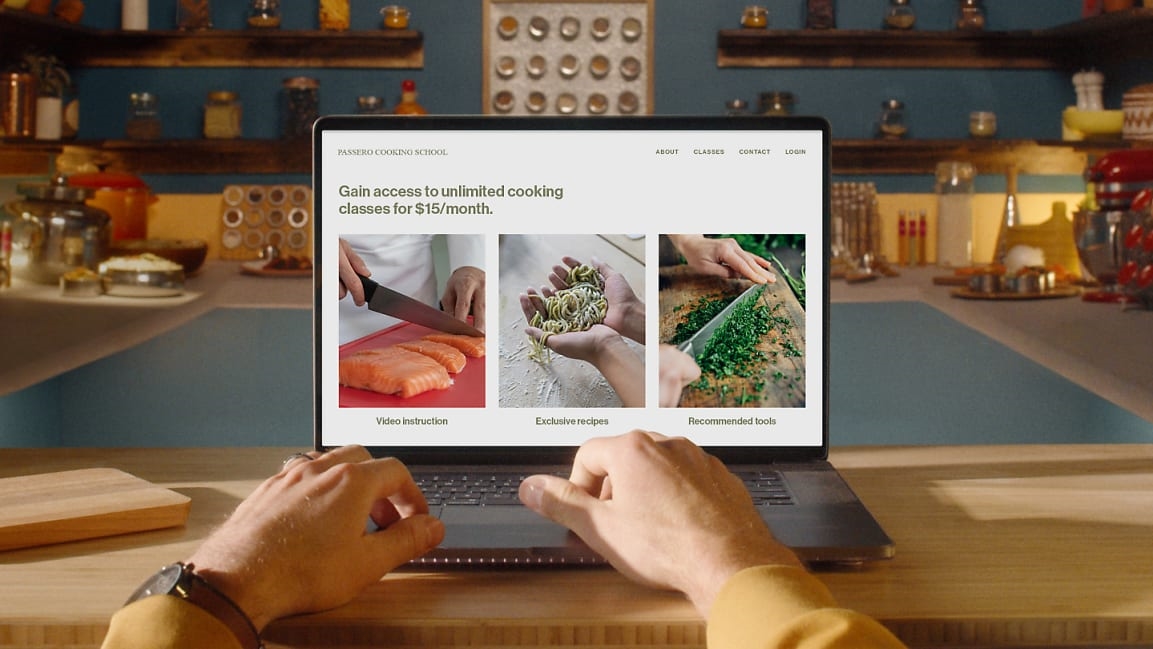Squarespace’s new feature could help more businesses survive the pandemic
Squarespace has made a name for itself by letting people and small businesses easily build websites. Now, it’s adding a new option for website owners that limits who can visit parts of their site. The feature will let Squarespace users put content behind a paywall, so that only subscribers can access it—enabling businesses that have shifted online during the pandemic to find new ways to bring in revenue.
The company is introducing what it calls Member Areas—special sections of customer websites that are restricted to people who’ve signed up for a membership, which can mean paying a regular subscription charge, coming up with a onetime fee, or simply creating a login. The goal is to give Squarespace customers a new way to offer content to their own customers and fans, whether that’s fitness instructors providing paid online classes during the coronavirus pandemic, writers offering regular newsletters to people who provide their email addresses, or chefs sharing virtual cookbooks with onetime purchasers.
“Especially today with everything being different with COVID, they’re all looking at different ways to turn that passion into profit,” says Paul Gubbay, Squarespace’s chief product officer.
The company already provides tools for its customers to sell physical goods and downloadable digital items, like ebooks, through their websites. And it offers an online scheduling tool to let people make appointments when business owners are free, whether they’re looking for an in-person haircut or a Zoom yoga class. With Member Areas, the company envisions giving people another way to potentially profit from their expertise, Gubbay says, by offering instructional or entertaining content to their fans, with some Squarespace users likely to use multiple tools on the site to build their businesses.
For example, he says, a jewelry seller offering products on Squarespace might see that customers are interested in fashion tips and set up a Member Area with regular advice on the subject. Or, he says, crafters who used to offer in-person make-your-own-candle sessions could switch to selling kits, using the scheduling tool to sign people up for classes and potentially posting video training material to a Member Area. (Squarespace doesn’t directly host streaming video, but users can embed streaming material from sites like YouTube and Vimeo into their Member Areas or other parts of their sites).
Southern California vocal coach Kimberly Moller has switched to virtual classes, she says in an email to Fast Company, using a Squarespace site to take applications, let people schedule sessions, and take payment.
“Singing produces more aerosols than the average conversation, so to mitigate the risk of having people in my studio, I teach online,” she explains.
She’s also setting up a Member Area that will offer features like warmup guides, tips on handling performance anxiety, and breathing exercises. She’ll likely put some content behind a paywall for monthly or annual subscribers and make some available for free, she says.
The Member Area feature allows Squarespace users to use the service’s normal Squarespace CMS to build out pages that they want to be paywalled or restricted to logged in users. They can drag and drop pages into a Member Area, into the normal free portion of a Squarespace site, or from one Member Area to another, says Squarespace group product manager Kimberly Lin. The paywall features are set up so that even with a link to the restricted section of the site, nobody can access the Member Area without logging in to a subscribed account, she says.
Alison Smith, who runs Kanda Yoga School in San Francisco, said in an email to Fast Company that she’s planning on using Member Areas to host a “treasure trove” of prerecorded classes, workshops, and seminars for her students. She’ll also continue to offer live online classes, since she thinks it’s critical to offer the kind of personalized attention she could once deliver to students in person.
“I believe this can be replicated online, but it requires that the teacher is truly teaching—sitting, watching, instructing—rather than practicing and leading class from their own mat,” she says.
Squarespace customers can also drag and drop content from Member Areas and other pages into the platform’s email building tool, letting them use Member Areas to build email newsletters that could contain full content from the site or simply a preview. Squarespace’s email marketing tool makes it possible to send emails only to subscribers with access to a particular Member Area, Gubbay explains.
Squarespace generally offers a variety of pricing plans with different features and charges for sales transactions. Enabling Member Areas costs an additional fee, from $10 to $40 if paid monthly, with higher priced plans enabling lower per-transaction charges and extra features like gift cards.
While other tools like Patreon and Substack already are widely used for building paid newsletters and hosting paid content, Gubbay says part of Squarespace’s advantage is that it’s effectively a one-stop shop for a variety of ways to reach consumers, from premium content to physical goods. That can mean cost and time savings for business owners as they expand their businesses or check out new possibilities for reaching customers, both during the current phase of the pandemic and beyond.
(16)



